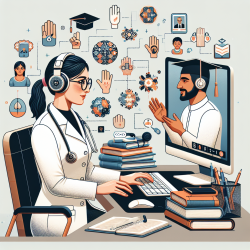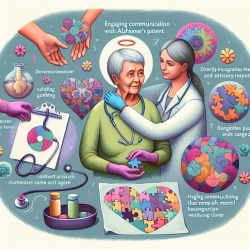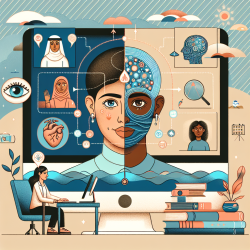As an Occupational Therapist (OT) in today's fast-paced world, staying abreast of technological advancements is not just beneficial—it's essential. The integration of technology into occupational therapy practices has the potential to enhance the effectiveness of interventions, streamline administrative tasks, and improve patient outcomes. This blog aims to provide a professional insight into how technology can be effectively utilized in occupational therapy, focusing on telepractice and online therapy services.
The Evolution of Occupational Therapy with Technology
Occupational therapy has evolved significantly over the years, with technology playing a pivotal role in this transformation. From electronic health records (EHRs) to telepractice, technological advancements have made it easier for OTs to deliver high-quality care.
Telepractice: Expanding Access to Care
Telepractice has emerged as a game-changer in the field of occupational therapy. It allows therapists to reach clients in remote or underserved areas, ensuring that everyone has access to the care they need. Telepractice also offers flexibility, making it easier for OTs to balance their professional and personal lives.
- Increased Accessibility: Telepractice eliminates geographical barriers, making it possible for clients to receive therapy regardless of their location.
- Convenience: Clients can receive therapy from the comfort of their homes, reducing the need for travel and making it easier to fit therapy sessions into their schedules.
- Efficiency: Telepractice can streamline administrative tasks, such as scheduling and documentation, allowing OTs to focus more on client care.
Online Therapy Services: A New Frontier
Online therapy services, including online speech therapy, are becoming increasingly popular. These services leverage technology to deliver therapy sessions over the internet, offering a convenient and effective alternative to traditional in-person therapy.
- Interactive Platforms: Many online therapy services use interactive platforms that engage clients and make therapy sessions more enjoyable.
- Data-Driven Approaches: Technology allows for the collection and analysis of data, helping OTs to track progress and adjust interventions as needed.
- Collaboration Tools: Online platforms often include tools that facilitate collaboration between therapists, clients, and other stakeholders, ensuring a holistic approach to care.
Challenges and Considerations
While technology offers many benefits, it also presents certain challenges that OTs must navigate. These include ensuring data privacy and security, managing technology-related costs, and addressing potential technical issues during therapy sessions. It is essential for OTs to stay informed about best practices and guidelines to effectively integrate technology into their practice.
Legal and Ethical Considerations
When using technology in occupational therapy, it is crucial to adhere to legal and ethical standards. This includes obtaining informed consent, maintaining client confidentiality, and ensuring that all technology used is compliant with relevant regulations.
Conclusion
Technology has the potential to revolutionize occupational therapy, offering new ways to deliver care and improve client outcomes. By embracing telepractice and online therapy services, OTs can expand their reach, enhance their practice, and ultimately provide better care to their clients. As we move forward, it is essential for OTs to stay informed about technological advancements and best practices to ensure they are leveraging these tools effectively and ethically.










